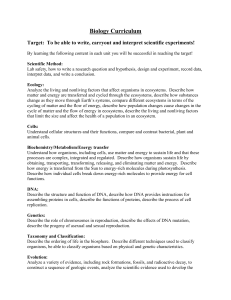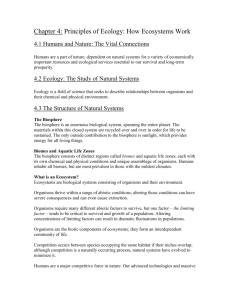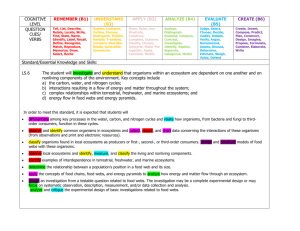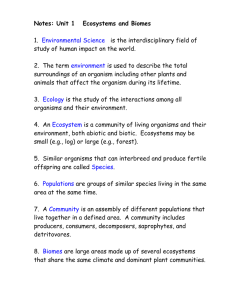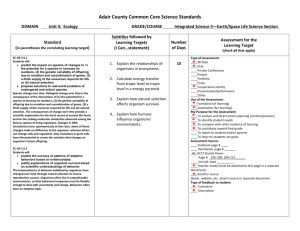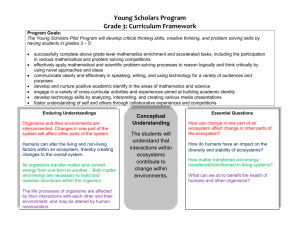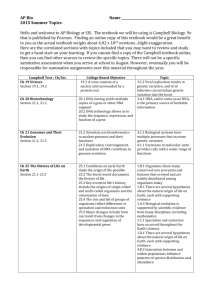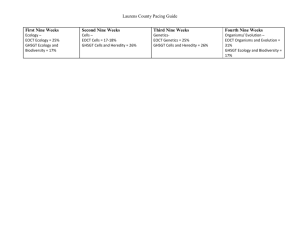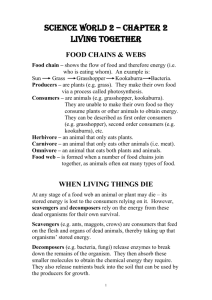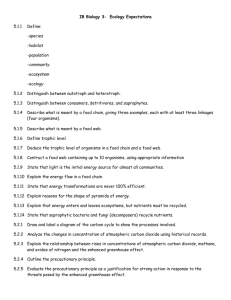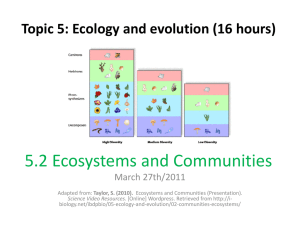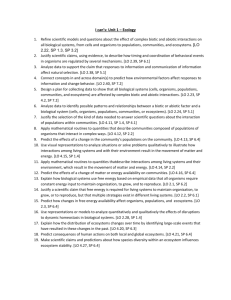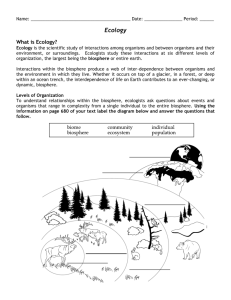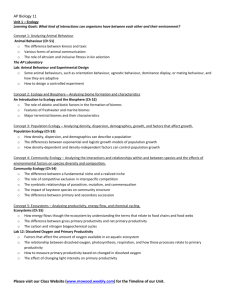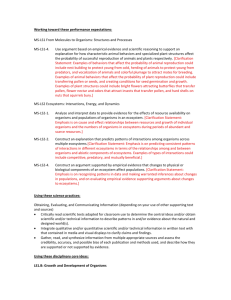Ecology
advertisement
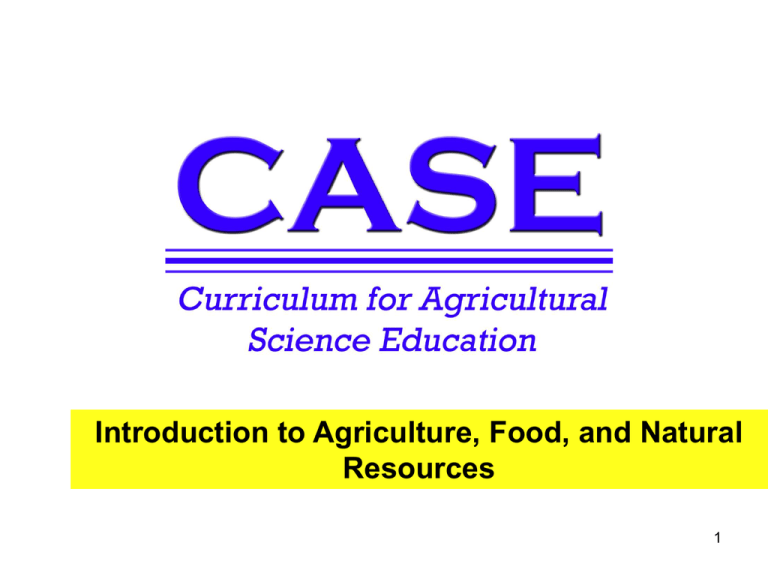
Introduction to Agriculture, Food, and Natural Resources 1 Introduction to Agriculture, Food, and Natural Resources Ecology Unit 4 – Lesson 4.3 Living in Harmony 2 What is Ecology? • The study of the interactions of organisms with one another and their environment – Interconnectedness – Plants and animals need each other – Organisms need oxygen, water, nutrients, shelter, et. cetera 3 Biomes • Large region with similar plants, animals, and other organisms adapted to the climate and other conditions. • Consist of many similar ecosystems • Examples: – Taiga – Aquatic – Desert – Grassland – Temperate Forest – Tropical Rainforest – Tundra 4 Ecosystems • The interactions between the living things and the nonliving things in a place. • Plants, animals, and other organisms rely on each other and on the physical environment. 5 Components of Ecosystems • Abiotic – nonliving factors Physical and chemical characteristics – Air – Water – Land – Soil nutrients – Temperature – Sunlight – Precipitation 6 Components of Ecosystems • Biotic – living organisms – Flora (plants) – Fauna (animals) – Microorganisms 7 Interactions of Organisms Food chain – single Food web – series path of feeding relationships of interrelated food chains Grass Mouse Snake 8 Producers and Consumers • Producer – manufacture their own food, such as plants • Consumer – obtain energy by eating other organisms – Herbivores – eat plants – Carnivores – eat animals – Omnivores – eat plants and animals 9 What is Energy? • Defined – The ability to do work or cause changes to occur. • Organisms need energy for life-sustaining processes. 10 Trophic Levels • An organism’s position in the sequence of energy transfers – Producers – first level – Herbivores – second level – Carnivores – third level or higher Image source: http://www.tutorvista.com/content/science/scienceii/environment/trophic-levels.php 11 Energy Flow • As energy moves through the trophic levels, energy is lost – Energy to maintain body heat – Movement – Energy for body processes – digestion, etc. • Roughly 10% of transferred energy is stored in the next level 12 References Feldkamp, S. (Ed.). (2002). Modern biology. Austin, TX: Holt, Rinehart, and Winston. Gardiner, L. (2008). Biomes and ecosystems. Retrieved from http://www.windows.ucar.edu/tour/link=/ea rth/ecosystems.html&portal=voca 13

